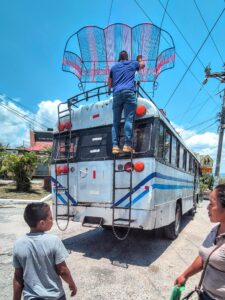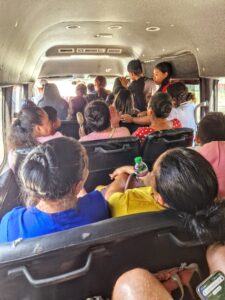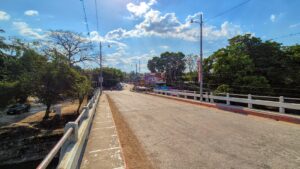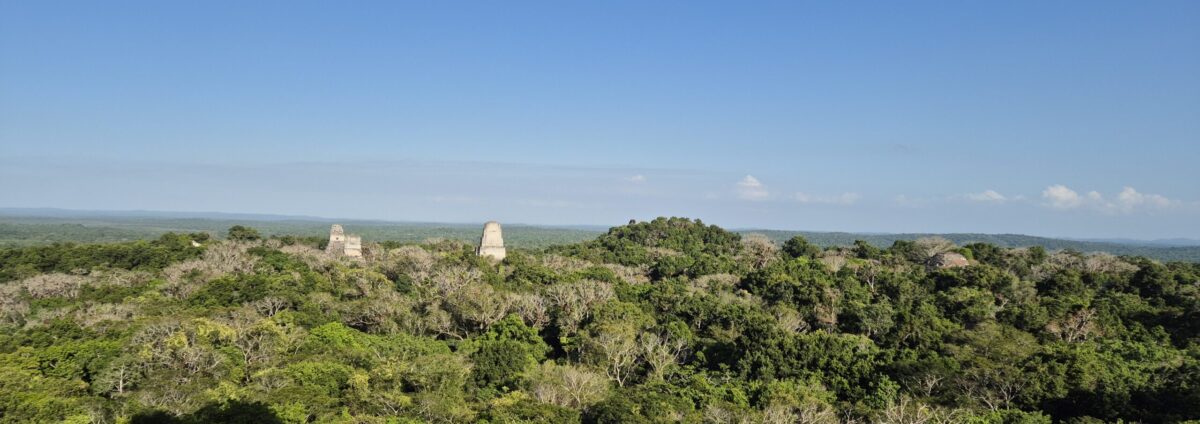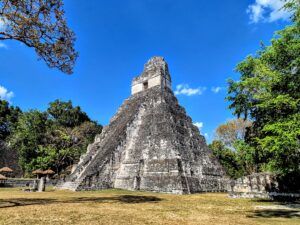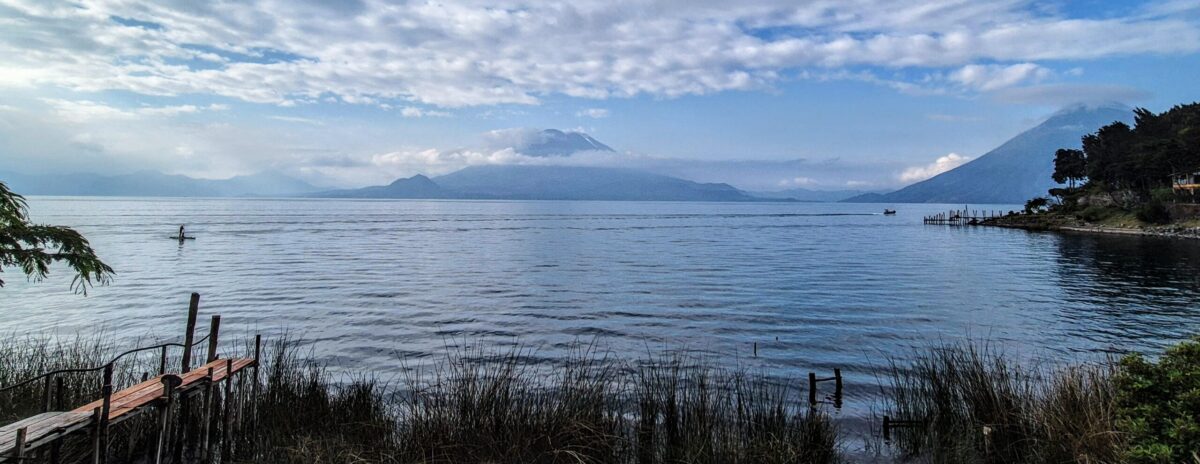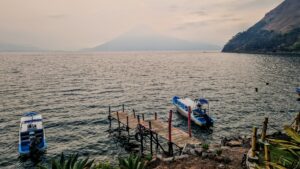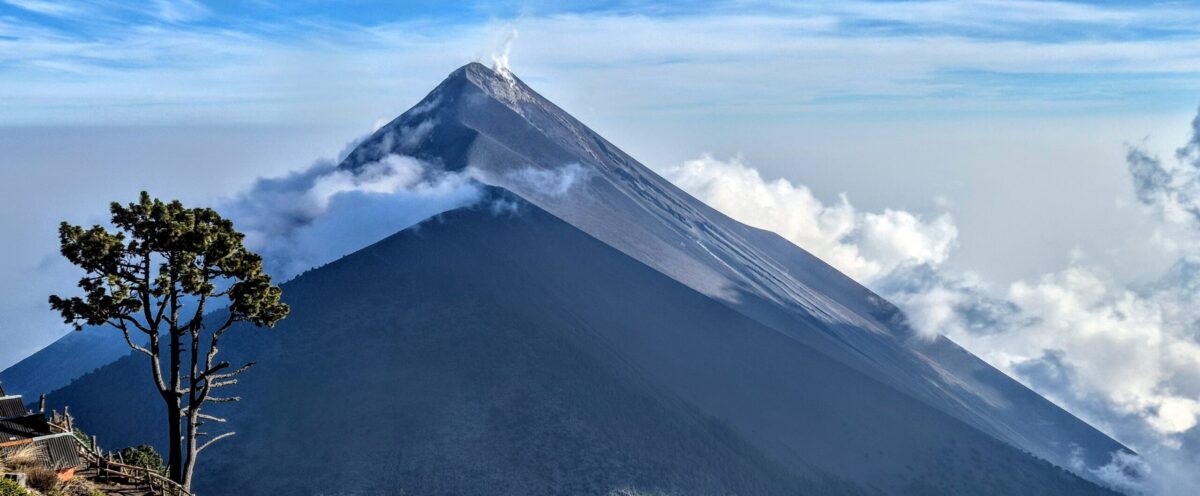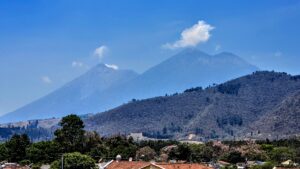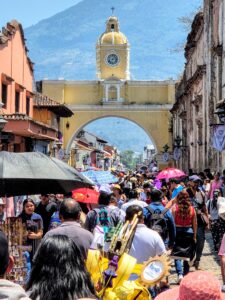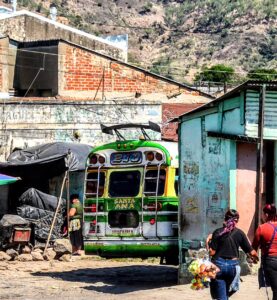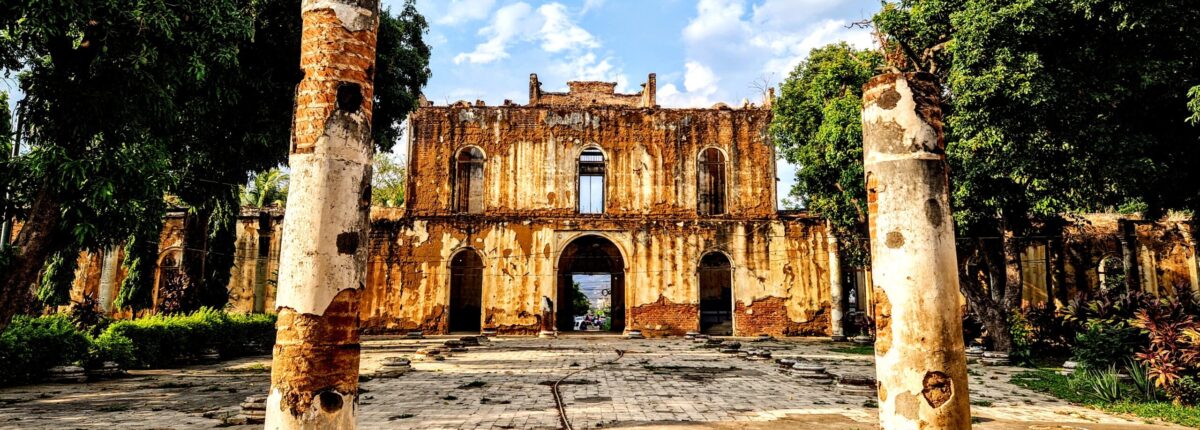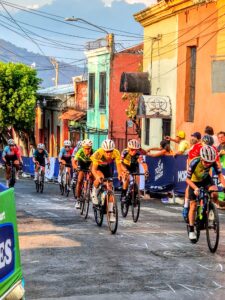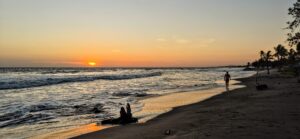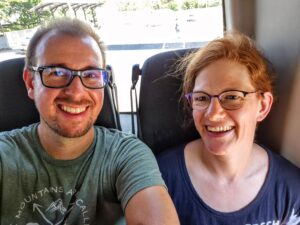We extended our trip by a few days, changing our flight to go home from Belize. This had the dual benefit of avoiding two flights to get us to Mexico City, and having a couple of days exploring Belize. Whilst most people head for the Caribbean coast and popular dive spots, we went to San Ignacio, near the border to Guatemala. We barely scratched the surface of this country, but saw some incredible Mayan sites.
We set off from Saraguate Hostel in Guatemala, arriving into Flores by an easy bus journey chatting to a couple we’d met at the hostel. We got a tuk-tuk across to the bus station and were immediately whisked away to a minibus ‘colectivo’ heading to the Guatemalan border town of Melchor de Mencos. Our bags were flung on the roof and we grabbed the back seat. We set off, pleased to have the whole back row to ourselves. This was very short lived as we then stopped back in the main market and the bus began to fill up. Our bags were then properly strapped onto the roof along with various other bags and a child’s bicycle.
We set off at a good pace, picking up the occasional person, even when I thought we couldn’t get many more people on board the driver kept stopping! We then came to a grinding halt for some roadworks. We sat in the still hot air for about 45 minutes, dripping with sweat and unable to move much in the crowded bus. Our driver seemed to anticipate the length of wait as he stopped in a shady spot, with a large gap before the end of the queue in front of us. Eventually we managed to get moving again. It turned out the road was in the middle of being dug up for resurfacing, there were no traffic lights, no signs, and no one really controlling the traffic, you just had to get into the moving convoy and go! We drove right through the road works whilst they were laying sand and busy working around the traffic.
We made it safely to the border town and were directed to walk across the bridge to cross the border, at this point we hadn’t actually done a border where we had to show our own passports since leaving Costa Rica! We changed our final Guatemalan notes with a guy on the street just before the border. It’s so much easier to do this now when you can just check the rate on your phone and work out if you’re getting an OK deal or not. The border crossing was very smooth and we were soon in Belize.
Continue reading “A quick taster of Mayan Belize in San Ignacio”

